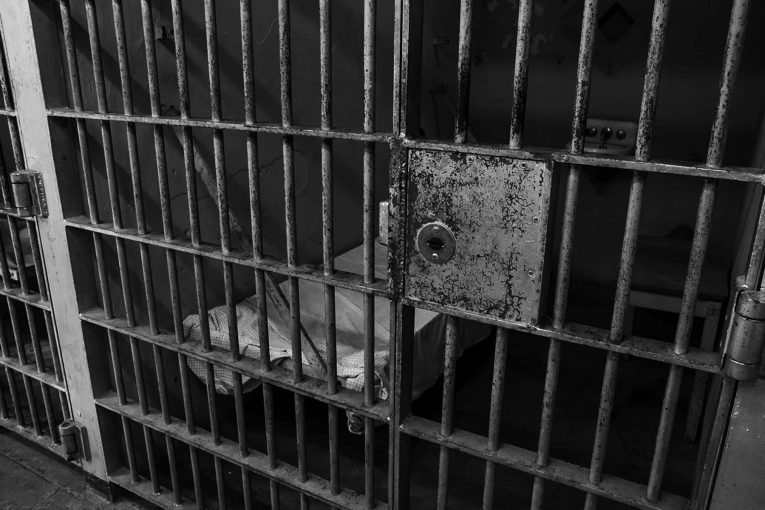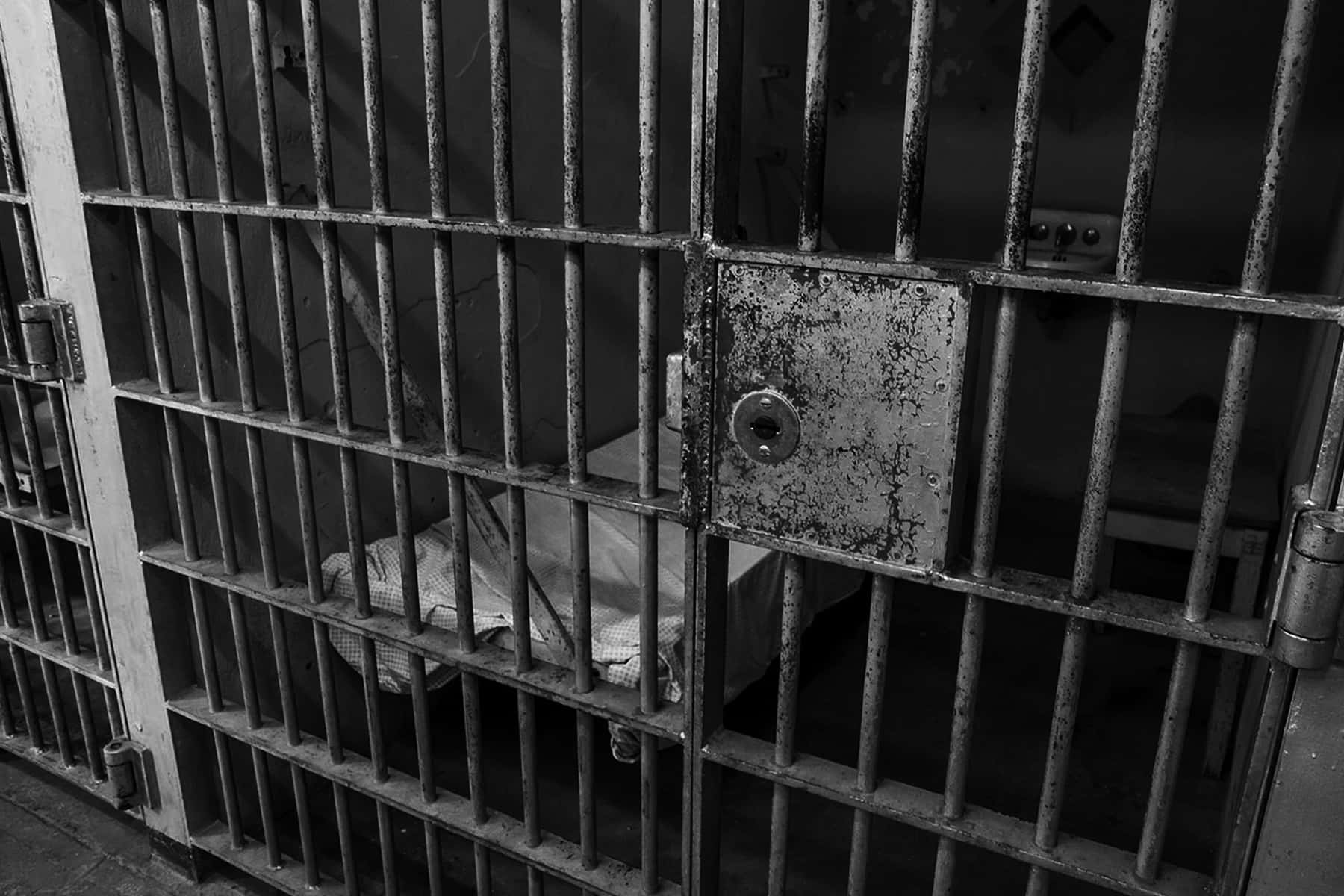

Decades-high inflation has caused prices to swell beyond some prisoners’ ability to pay.
by Patrick Irving
The hole in the sole of my shoe is a problem. The plastic bag I sandwich between my two best pairs of socks can do only so much during the days we’re let outside. It protects well against the rain that soaks in through my shoe, but Idaho snow is a formidable foe.
The problem is that for the price of a new pair of white Reebok Classics, the cheapest shoes available at the commissary, I could stave off hunger pains for at least a few weeks more. I could continue scrubbing my parts and pieces with a soap bar bigger than the matchbook-size, prison-issued bar. And I could wash my sweaty clothes in a toilet with real detergent.
The reason I’m washing my clothes in a toilet is that I live in the desert just south of Boise, at the Idaho Maximum  Security Institution. I’m eight years into a 15-to-40-year sentence, handed down for two counts of arson committed during a six-month stretch while I was in a drug-induced psychosis.
Security Institution. I’m eight years into a 15-to-40-year sentence, handed down for two counts of arson committed during a six-month stretch while I was in a drug-induced psychosis.
Prison is a harsh environment — physically, spiritually and economically. Like anyone else, prisoners need to buy things. But unlike people on the outside, we have only one store to choose from: the commissary. It’s run by a private company called the Keefe Group, which has an exclusive contract with the Idaho Department of Correction. (Keefe is a subsidiary of TKC, a holding company indirectly controlled by H.I.G. Capital, a private equity firm.) The company’s captive clients are limited to shopping once a week from a roster that’s subject to the whims of the company — and the economy. With decades-high inflation affecting Americans everywhere, prices of certain essentials have swelled beyond some prisoners’ ability to pay.
The commissary is sort of like your local corner store. Among its offerings are staples like food, clothing and hygiene products that, for us inside, can make the difference between a clean head of hair and a rinsed head of hair, a bad meal and a terrible meal, a cold night and a freezing night.
Inside, some things do come free. We are provided three meals a day, except on Sundays, when we’re loaded up with breakfast and dinner and provided with what we call lunch muffins in between. Toilet paper is on the house, which is not the case at all institutions. We get two towels. A pocket comb. A plastic foam cup. A stubby pencil. A couple of tiny soap bars (but no shampoo). A travel-size tube of toothpaste and a middle-finger-size toothbrush. We get a couple of blankets and then one more once the temperature drops. Upon intake, prisoners here receive a state-issued uniform: two sets of scrubs, three pairs of underwear, some socks and white T-shirts and a pair of slip-ons, which are close to worthless in the Idaho winter.
But you get what you pay for in prison, too. We have a better menu than most, so there are only five or six meals on the regular rotation that I just can’t eat — like the taco macaroni. Still, when you’re cooking for hundreds, there’s always something to be desired. That’s why any effort to spruce up a dish with a spice or condiment — sriracha ($5.34 per 17-ounce bottle) on everything, please — can go a long way.
As for the cold, the prison-issued coat and beanie we receive in the winter aren’t enough without reinforcements. So those who are able to will buy wool gloves ($7.24), thermal tops and bottoms ($6.66 to $7.48), sweatshirts and sweatpants ($21.39 apiece).
But to get these things, prisoners at my institution have to contend with prices set by Keefe. In exchange for exclusive access to our incarcerated population, Keefe rewards the Idaho Department of Correction with a revenue-sharing arrangement that guarantees a yearly minimum of $1.25 million plus 40 percent of the gross beyond an annual base sales target. That’s according to the Keefe Group-Idaho Department of Correction contract I received via a public records request. As a result of this arrangement, the two entities are able to benefit from working closely together to leverage market tumult, usually at the expense of their shared clients.
In April, Keefe Commissary Network, in an electronic message sent to prisoners, announced a blanket price increase. The company attributed the move to the Covid pandemic and its financial impacts on trucking, manufacturing, labor and other parts of the supply chain. The projected damage to our prison wallets was approximately 8.5 percent for everything that remained on the roster. But immediately after the price-hike announcement, Keefe sent another message, informing us that many staples would be discontinued or replaced with different brands.
By May 1, prices for a two-ounce packet of squeeze cheese had doubled (to 65 cents from 32 cents). Flour tortillas, a staple for many, were briefly eliminated but recently reinstated for $2.03 per eight ounces, a 123 percent increase. Five-ounce sausages were replaced with a three-ounce version at a slightly lower price, but the larger ones are now back — and at $4.27, they cost 64 percent more.
Other items were also swapped out for different brands and sizes, avoiding a technical increase but ultimately imposing a much higher one. A package of generic cocoa was replaced with Swiss Miss, shrinking to nine ounces from 10 ounces while almost doubling in price (to $2.73, from about $1.50). Boxes of 100 packets of an artificial sweetener were pulled from the shelves to make room for a replacement that costs three times the previous price ($3.75, from $1.26). Not even honey was safe. After replacing it with a sugar-free version, the cost soared over 130 percent (to $6, from $2.58).
Just as one corporation was pinching our pockets, JPay, a private company providing communications and financial services to prisoners, announced the end of its “pandemic promotions.” To communicate with loved ones over the JPay platform, a digital stamp is required for each incoming and outgoing email. Today, 60 stamps cost prisoners and their families $18, an 80 percent jump from the promotional rate.
These prices may strike the average reader as inconsequential, but they are a lot relative to what prisoners can earn inside. On the unit where I reside, there are a few paid, resident worker positions — janitors and barbers — but all are currently filled. I’m told the list of those waiting for the jobs is long.
Assuming a position were to open, I could make a monthly wage of $5 to $80, at 40 cents an hour. The latter income would afford me a sense of pride and dignity, but it would also require me to clean for 200 hours a month. That would leave minimal time for writing and research and the work I do advocating on behalf of the incarcerated community — activities I rely on to maintain my mental health.
Outside of sanctioned labor exists a variety of other options. In prison you will find plenty of functioning economies built on trades and services, innovation and demand. Some perform repairs on miscellaneous property items; others whip up confections — including taffy, fudge, pies and cinnamon rolls — then offer them to other prisoners in exchange for money and various other commissary items.
Unsanctioned professions can include artist, bootlegger, toymaker and more. A dozen entrepreneurs compete to fill every conceivable niche. But along with these opportunities are good reasons to not engage. First, the punishments for participating in an unsanctioned prison marketplace can range from verbal lashings to a decade delay in release.
Second, dramatic increases in the price of raw materials are leaving little in the margins where profits were once made. A batch of illicit fudge — ingredients can include sugar, peanut butter, cookies, candy bars and honey buns — used to cost approximately $5 to produce, allowing makers to more than double their return. Today the batch would cost north of $8. I’m fortunate that I can rely on two sets of recently retired parents, who pool from their savings approximately $200 a month to help defray my costs. But it’s also increasingly untenable, and emotionally difficult, to continue relying on my parents for assistance. Four decades into life, and I’m still asking for an allowance.
Making matters worse, for my family’s financial support to reach me, they must subject themselves to the financial dealings of prison profiteers and the State of Idaho. Every time they send money to be used for commissary items, they must pay Access Corrections, a Keefe unit that must be used to send money to prisoners, as much as 22 percent for a $19.99 transfer. If my parents wish to fund the account attached to the prison phone service, which is run by ICSolutions, another Keefe unit, they must pay 38.3 percent in taxes plus a $3 processing fee (on top of the 8 cents per minute ICSolutions charges for a phone call).
The decision I have to make is really no decision at all: It’s time once again to tap my emergency funds, buy a pair of new shoes ($48.72) and hope they last.
Patrick Irving, a writer incarcerated in Idaho, is the author of the newsletter First Amend This. Published by the Prison Journalism Project.






Interesting article, regarding the “economy” inside of prison.
If it were up to me, I’d totally-overhaul what prisoners can earn. This would not only benefit prisoners (while in prison, and after they’re released), but society as a whole.
Possibly not just limited to money, but privileges while incarcerated as well.
For that matter, they might even be able to save up a “nest-egg”, to be used upon their release. (And/or, to reimburse those they victimized, who seem to be “forgotten about” in this article.)
As I recall, part of the problem is that influential industries outside of prison sometimes object to this.
Of course, few prisoners are ever going to be able to fully-reimburse those they victimized, let alone the cost of their own incarceration.
So to some degree, those costs will just have to be “eaten” by society (and victims).
But if reachable incentives are eliminated as a form of “punishment”, nothing will ever improve. And that doesn’t benefit anyone.